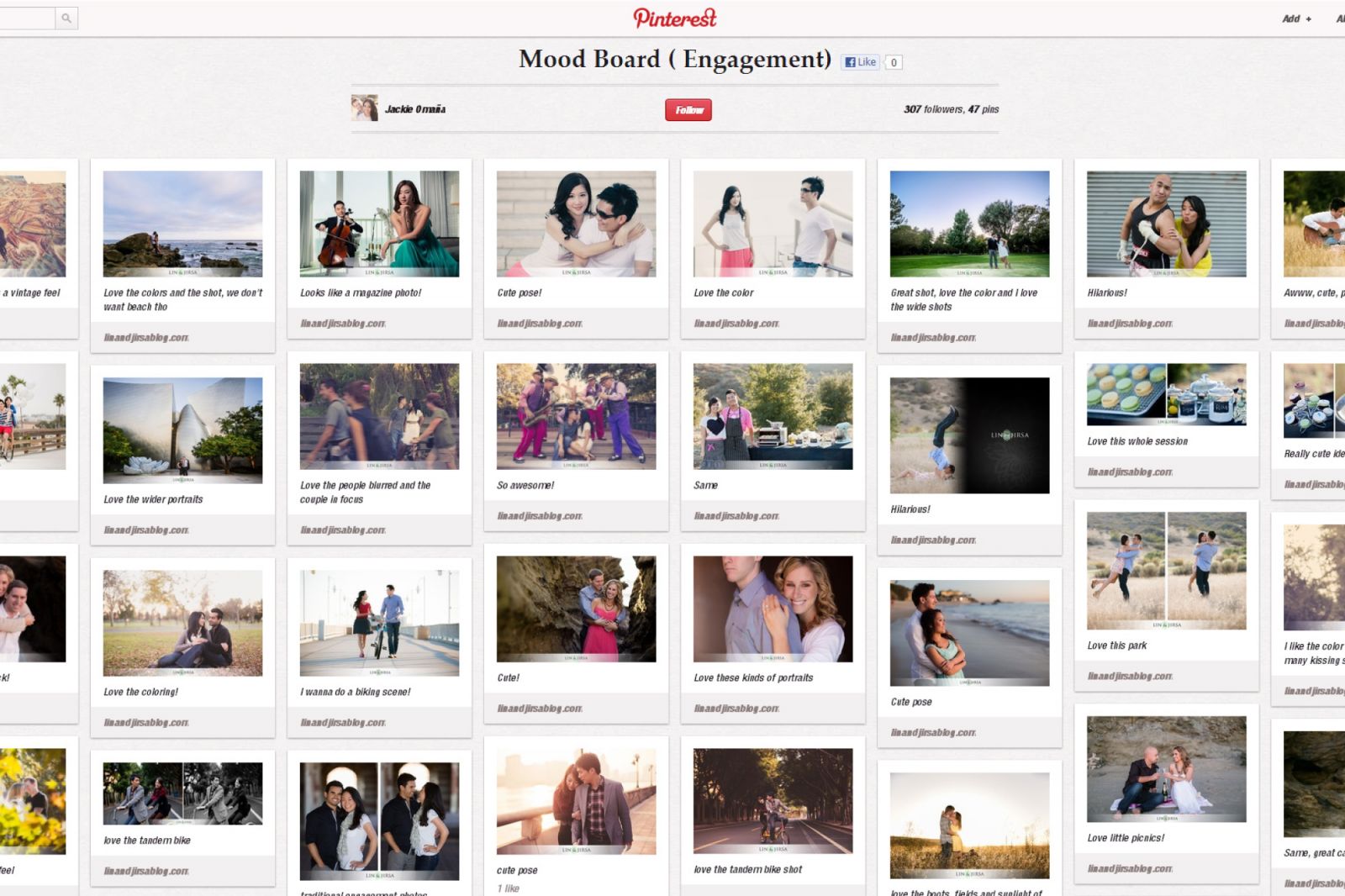A mood board in photography is a compilation of photographs that represents the desired style for a photoshoot. The mood board can be created by the client, the photographer, or any other contributor to the photo shoot such as a stylist or wedding coordinator. Whether you are shooting for an editorial piece or doing couples portraiture, you should always have your clients put together a mood board. In this article, we’ll discuss what photography mood boards are, what they aren’t, and how to use them to help you take better photography.

Mood board Video
Watch Pye’s video on mood boards below for more insight.
How to Create a Mood Board
To create a mood board, we instruct our clients to pick photos primarily from our website and blog. We don’t mind clients also selecting a few photos from other websites and photographers, but nothing is worse than a client asking you to simply recreate someone else’s work. We want to make sure our style of photography is what the couple wants because in general, a photographer is not at their best when they’re trying to mimic someone else.
Five Reasons You Should Have Clients Create a Mood Board

1) A Means of Visual Communication
If you were to ask the client what they like about your style, it’s going to be very difficult for them to describe it. Since they are most often not photographers, they may not know the terminology to use, or they may even use it incorrectly. They might say, “I like the color” or “I like this picture because it looks HDR.” They’re often not going to know how to convey their vision in terms of words. We want to create the mood board so that we can have a visual means of communicating their vision.
2) Tailor Unrealistic Expectations
The second reason for creating a mood board is to help you address unrealistic expectations. For example, let’s say that they’ve booked a 2-hour photo session with you. Yet, they have pictures that are done during mid-day, sunset, and even night time. That clearly would not fit into a 2-hour window. What if they pinned images from a desert scene, and they’ve also pinned images from a downtown scene, and those 2 scenes are 4 hours apart? Again, we have to pick one or the other.
These are common kinds of unrealistic expectations that we might see from the mood board. Positively communicate and give solutions rather than negative shut downs.
3) Address Potential Concerns
The mood board is often a place that we’re going to identify and address potential concerns. For example, what if the majority of the images on the mood board don’t match your style as a photographer? A few images from other photographers are fine because those can help push style and creativity. However, if the majority of their board is another photographer’s images and those images are vastly different from your style, then the potential concern needs to be addressed.
4) Free Marketing

The fifth reason you should have clients create mood boards is the side benefit of free marketing. When clients pin your images off your blog on Pinterest, they are essentially sharing your images on that social media platform. Each of these images link back to the source, which is your website. So these mood boards can serve as a huge source of traffic to your website.
What the Mood Board is NOT
 While mood boards serve as helpful tools for better understanding a client’s vision, they don’t always get to the root of their true priorities, needs and desires. The mood board might show you poses they like or locations they’d like to visit on their shoot. But in order to determine what they truly value, you need to dig deeper with the right questions. This is where the WAVE (wall art vision exercise) comes into play. You can find out more about the WAVE in our free tutorial here.
While mood boards serve as helpful tools for better understanding a client’s vision, they don’t always get to the root of their true priorities, needs and desires. The mood board might show you poses they like or locations they’d like to visit on their shoot. But in order to determine what they truly value, you need to dig deeper with the right questions. This is where the WAVE (wall art vision exercise) comes into play. You can find out more about the WAVE in our free tutorial here.












